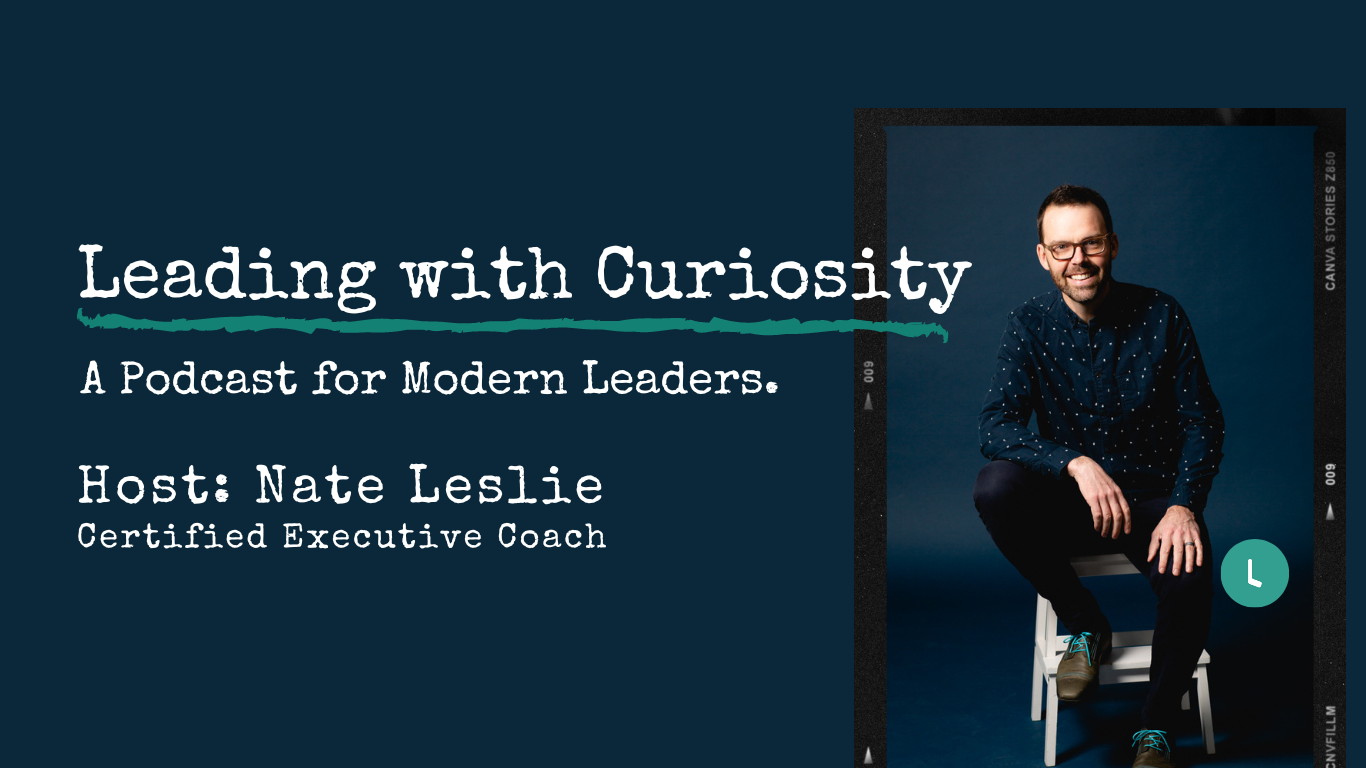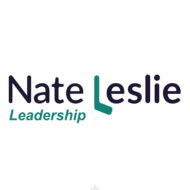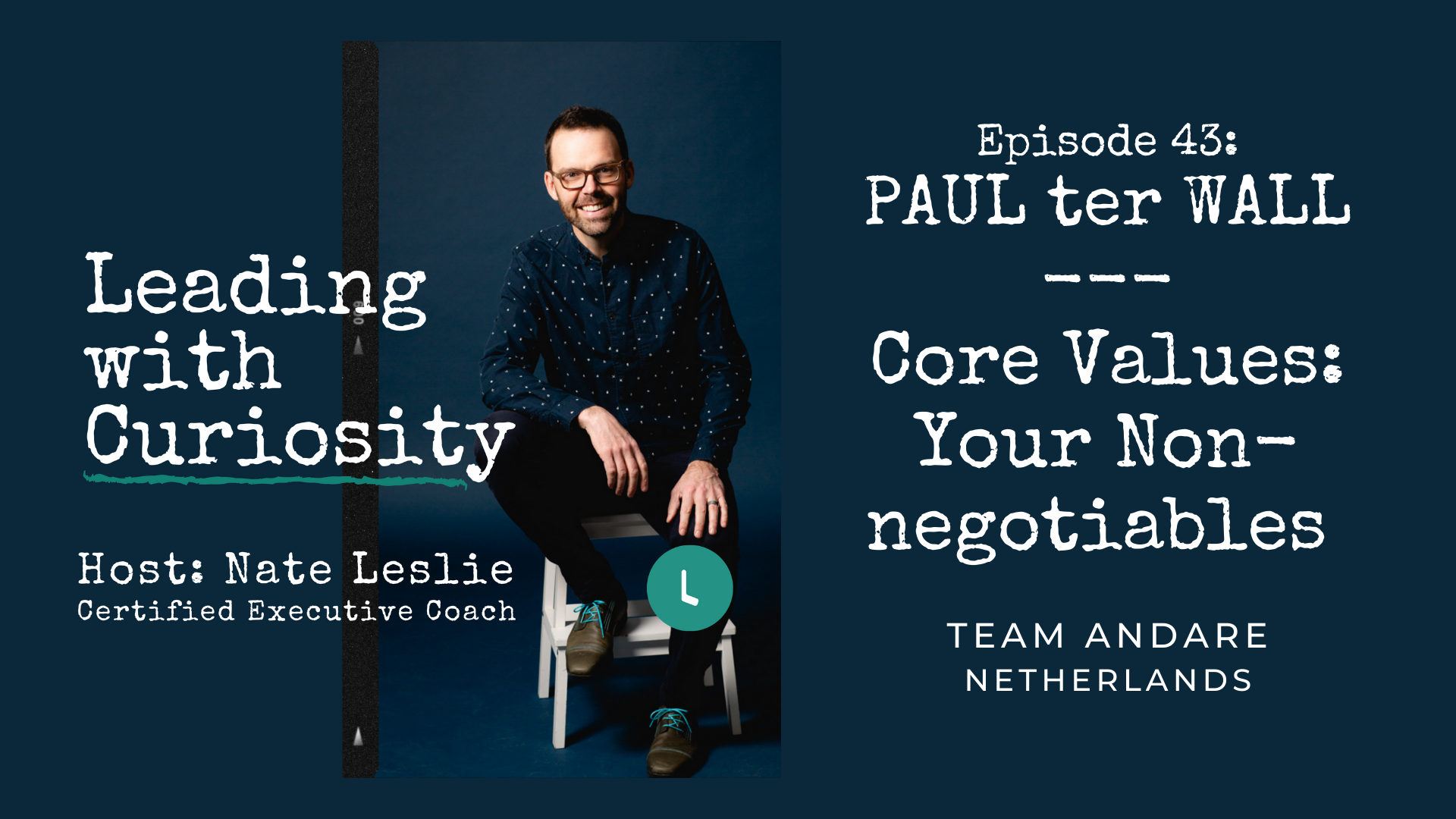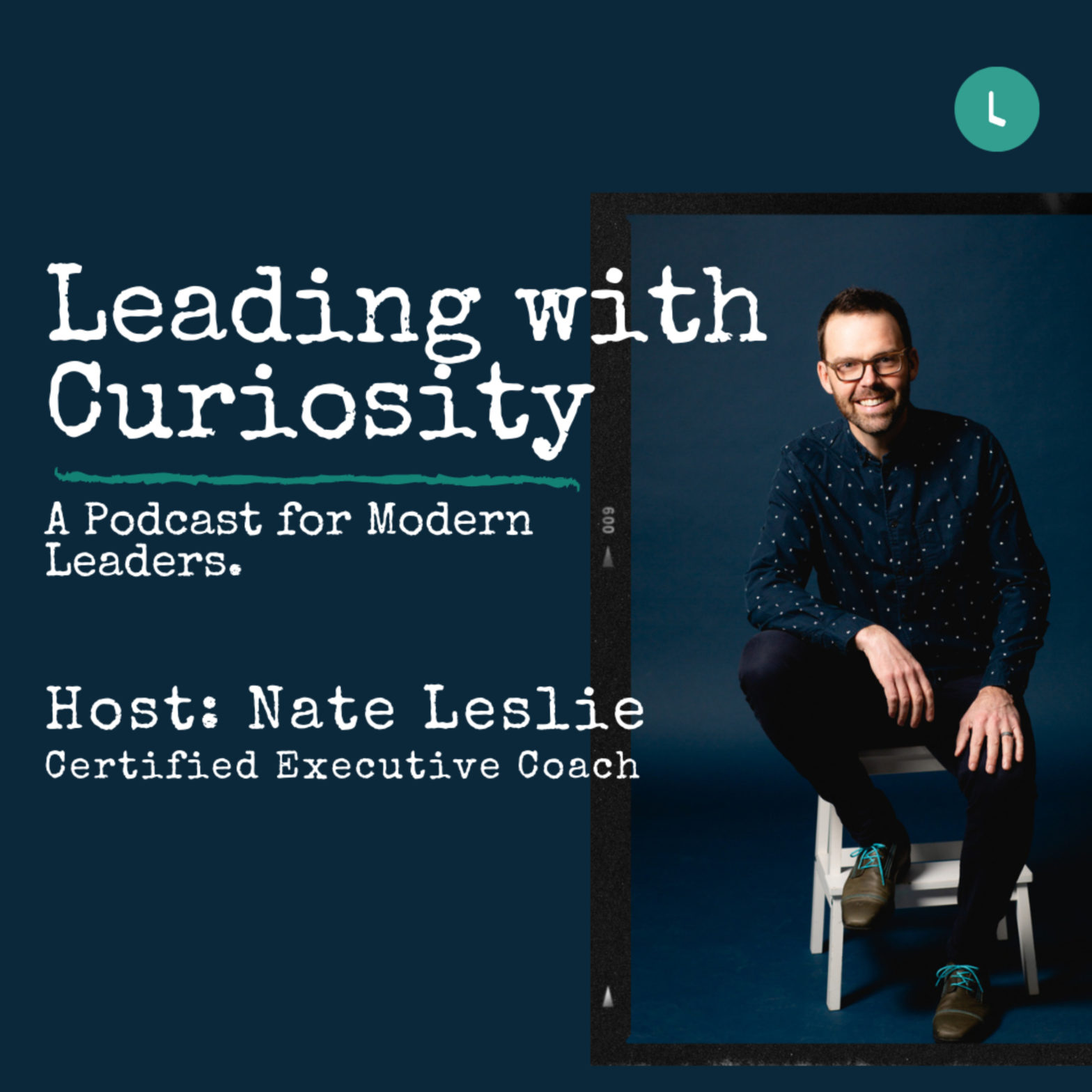@35:37 – Nate Leslie (nateleslie.ca)
Hey listeners, today Paul ter Wal from Team Andare. In the Netherlands joined me. I immediately invited him when his work came across my desk because of the connection between who I’m becoming as an executive coach and what I am being more and more convicted.
The impact of the presence or lack thereof on having clearly defined and articulated core values can have on an organization and the human experience that people have working in that organization.
He says it great right off the top. He says it’s simply your non-negotiables. So if you think that the idea of core values is somehow kind of intangible or philosophical, ask yourself, what is non-negotiable in my life?
What is non-negotiable in my business, in our team, in our organization, and from there, you’ve got the foundation on which you can build.
Love this conversation. Enjoy.
@0:16 – Nate Leslie (nateleslie.ca)
Paul ter Wal, from Team Andare in the Netherlands. So great to connect across the ocean with you today. Welcome to Leading with Curiosity.
@0:30 – Paul ter Wal, www.team-andare.com (paulterwal.nl)
Thank you, Nate. And happy to be with you.
@0:35 – Nate Leslie (nateleslie.ca)
When I saw the opportunity to get you onto the podcast, it took seconds. saw clear alignment with the work that you’re doing, the work that I’m doing, and a deep commitment to the importance of values, personal values, core values inside of teams and organizations.
Where should we start? us a little bit about the work that you’re doing and what’s important.
@1:01 – Paul ter Wal, www.team-andare.com (paulterwal.nl)
Well, let me start where I started. I started as a lawyer 40 years ago. I studied label law, Social Security law.
And what you see in a lawyer’s practice that you always come in your position when something goes wrong. So somebody gets ill, they get Social Security.
If they get unemployed, they get an allowance. If they have a conflict, the lawyers come in to settle. after 10, 15 years, I was completely disturbed by that fact that I was always running after what happened in the world.
And so I got interested in what’s on the start of anything. And people talk about organizations with a mission of
Vision, strategy, planning, and that kind of stuff. And I always wondered, what is behind that vision or mission or whatever you start with?
And when you look at a lot of family businesses, it’s what we say the family core values. It’s the purpose, the meaning of that family, how they want to work and how they want to connect.
And then somebody from the US told me, Paul, it’s not a core value, it’s about non-negotiables. And that hit me immediately because sometimes we feel that a core value and it means the core, your core, it’s inside your body, it’s a value that you carry.
And he said, well, you can’t negotiate about us. So a mission and a vision You can change it over years.
But really you can’t change your non-negotiables, your core feelings that easy. when I go to a company, they ask for support, for guidance, for whatever, I always start with a question, what are your non-negotiables?
Because that set the guidelines for me where to start discussion with them. Because if you have five or six or four non-negotiables as an organization, as a human being, that sets the frame in which I can work with you.
So it makes me wonder why you do the things you do and who is holding you accountable for it.
So you go immediately deep in a conversation. I came with somebody when somebody says, I have a strong feeling for loyalty.
So loyalty is my non-negotiable. I will ask them how many people did you fire last year? Because there is a connection between firing somebody and having your non-negotiable of loyalty.
Then something must have happened and it isn’t wrong to let people go. But something happened with that loyalty thing that you were hurt in one way or another.
That’s why you made that decision. And you get amazing beautiful conversations with people because then they have to go inside themselves.
It’s not the outside. It’s not the profitability. It’s not the KPIs. It’s not the appetite. I offer an organization, no you go inside the feeling of an organization and of their CEO or CFO.
So I like to have that conversation first. And then I ask, how can I support you? And But they know already that I’m focused on those core values and whatever we come to discuss in the coming weeks or months, we will link it to their core values.
And most of the time, the first time, they say, well, we have it somewhere on the internet and it will be somewhere on our website.
The next time they have it on the wall. Because then everybody can say, these are our core values. This is the way we want to do business with you, with the team, with our customers, with our finances.
This is it. So sometimes it leads to silly conversation that you say, what are you called values? And somebody says, I have no clue.
And I’m okay. So how do you do business? are you just selling stuff? Or do you have a purpose, a meaning in life with yourself and with your company?
So that’s fun.
@6:28 – Nate Leslie (nateleslie.ca)
Paul, a couple of things caught my attention right away. One, for the leader listening who felt before these five minutes that values was some kind of soft existential thing.
So I’m already going to borrow that to connect with people who maybe this is new. Maybe they go Don’t know.
@7:01 – Paul ter Wal, www.team-andare.com (paulterwal.nl)
Yeah, let’s go from there when you do come across people who really don’t know what’s next. Well, the point is, if you start this conversation, I found out that most people will have some sort of feeling what the core values are.
But if nobody starts the discussion about the core values, then it may slip away and you stepped in five years ago and nobody was discussing the core values and you just entered.
But everybody knows culture. The thing we do around here, this is the way we do things. And the way you do things is based on something.
And that’s something you can put them back and I call them the unwritten ground rules. You can reconnect. And then to call values.
It once started there, became some sort of unknown, unwritten. It’s there. That’s the way we behave and then it becomes culture.
And then this way we talk and we write our proposals, our websites. the people are disconnecting from those rules.
And I think as coaches, as consultants, it’s our role to get them back to the person. And if you have a purpose in your life, and I can warn the elderly, leaders, young people, Jen said, will go for their purpose and their meaning.
This afternoon, I had a talk with a representative of employees of a big company. The oldest had core values.
the youngest said, yeah, that’s my purpose. That’s connecting with my purpose. And they are 25, 20, And I think, yep, that generation is going to be that way for us.
we need to be prepared. And if we want to have an engaged workforce and we want to be profitable and we want to be successful, we need to reconnect with core values.
They determine the success of an organization.
@9:24 – Nate Leslie (nateleslie.ca)
We talked a little bit in the pre-interview about teams having core values that sometimes can and may differ a little bit from the ones that maybe a massive company has on the website.
Pros and cons and pitfalls to that and advantages.
@9:41 – Paul ter Wal, www.team-andare.com (paulterwal.nl)
Do you want to explore that a little bit? Yeah, well, if you have a big organization with 10,000, 15,000 people that I work for as well, then you see that the core values, the non-negotiables of the C suite, is
More open, it’s more, call it fake, it has more room in it, and then you can have different departments and teams and they specify more what is in the C-suite core values.
But I must warn if I see in a team totally different core values than they are of the organization, we need to have a meeting.
Because then somebody from C-suite fails to connect with that team. Because that team can go left and you want to go right.
And you create a massive conflict within the organization because there is no alignment anymore. So sometimes I see that the C-suite goal on the Friday afternoon somewhere to have a strategic session and then they change core values.
And then on Monday, the core values of the company are different. Well, forget about it. It’s not going to work.
It’s the words that you changed. You didn’t add the feeling of the teams and of the employees. So this is a big warning.
Always connect core values with the professionals, the people that do the real job. Even if it’s cleaning people, they have their core values.
They are professionals. They need need to be recognized and heard. So you need to be aware that there is a connection between the core values in all the different layers, in all the different departments, in all the different teams.
They can slightly different because you have different words in sales than you have in operations, but they should still be based on the same non-negotiables of the organization.
So if I see Those differences, I asked the managers or the team, I love to ask the team, can you explain why they are different than the non-negotiables of your organization?
If they can explain, and I noticed that there is that connection, that feeling between those, I’m fine, because it’s not up to me to saying whether those core values are right or wrong.
But there needs to be alignment between those of the team and those of the organization.
@12:35 – Nate Leslie (nateleslie.ca)
So if we took, for example, I’m working one-to-one with a director in a company, and I’m helping that person find that thread, that connection in their own personality, in their way of operating, they’re non-negotiables, relating to that of the organization.
And also exploring where there might Nate, the misalignment, and that’s okay. It’s just good to be aware of it because that’s going to influence maybe how that person needs to show up differently in a meeting.
Yeah, just expand on that concept of this work.
@13:15 – Paul ter Wal, www.team-andare.com (paulterwal.nl)
Well, I think, especially when you look at personal non-negotiables, they can be completely different than the organization I get in.
But I need to understand, do I fit in with that core values of that organization? Do I create clear sky when I meet there, or is it missed that comes in and formed?
It’s coming in the relationship because I think a lot of the conflicts that we see in organizations is because they never started talking about, what are your core values and how do you fit in within our organization?
Like McKinsey calls it in the seven S model, it’s the shared values that you need to be aware of.
And I think the C suite has the obligation to make sure that the shared values are clear for everybody.
Most of the time we talk about money and that kind of very important stuff. But you will create much more value and much more profitability if all the people understand the shared values.
So there are companies like Zepos in the US, part of Amazon, they have 10 family core values. can find them on their website.
They’re selling shoes online. If you want to work there, you need to prove within six weeks that you fit in those 10 family core values.
Otherwise, they love to give you money and ask you to leave. Why? You will cost them more if you don’t share the same values.
They have 1,800 people working for them. They started with 5, 6, then they could do it easily. Now, every team hiring new people are working with that person six weeks to sit to see whether they fit in.
So it is the obligation of the organization to check whether the new employee fits in that shared value. If not, well, they will leave soon and with a lot of trouble.
@15:46 – Nate Leslie (nateleslie.ca)
I am picturing an interview without questions about what resonates for you about our Carva Halli user. The interview process is a missed opportunity because it will come about after.
Let’s thread a few things together that we’ve been talking about. use that steel structure as a way to describe the non-negotiables.
You describe does someone bring clear skies to a meeting or do they bring mist? I have to say in one of my businesses, not so in the distant past, I had been, Matt, I’m going to say the word tolerating right now.
Someone was performing at a standard, loyal, they had a lot to offer. And we take pride in bringing clear skies, they brought mist.
And it took me, until a few years ago, to really see clearly, it was simply a values alignment and the longer I tolerated it, everyone had been feeling it.
Right? these steel structures, this foundation of the non-negotiables, do more clear it is to everyone in the Then when there’s a misalignment, it’s actually an easier conversation because you can pinpoint the misalignment, Emoree?
@17:08 – Paul ter Wal, www.team-andare.com (paulterwal.nl)
Absolutely. That’s why I hate it when the core values and non-negotiables are not on the home page of an organization on the Internet.
- I have no clue who you are as an organization and you can check mine of course because we have them on the whole page.
It would be strange if we don’t have it. The point is, if I want to work, if I want to buy stuff from your organization and especially in this era of sustainability goals and that kind of stuff, I need to know where you stand as an organization providing with me with groups and services.
Are we on that same level? Are we going to be disappointed in some way or are we really on that same level?
And that’s what I love because if we can have that open conversation, I can hold you accountable for what you stated.
And you can do that with a single professional in your organization. If they say, I fit in, I share the same values, something happens.
Don’t get angry, but just ask, hey, I thought we shared the same value. And now I see behavior that’s not in alignment with what we share as values.
Can you help me out? You hear it’s totally more respectful and open conversation than blaming somebody, hey, you’re not bad.
So it helps leaders to have a fair and open conversation because You can start every team meeting with just a small discussion on one of the core values.
Hey guys, this month I want to talk about. Let’s share some ideas. How can we improve our knowledge, our behavior on this core values in the coming weeks?
And people will give ideas and you can say, okay, let’s do it this way and let’s see how far we can come in the coming weeks.
Then in the minds of the people but also in their hearts, the core value is back alive. It’s not something that’s written somewhere in the whole ways.
No, it’s with them and they think, oh yeah, I need to be aware. And if I have that conversation with my client next week, I need to think about this core value because it will help me to make clear to my customer.
What we do and what we want and who we want to be.
@20:06 – Nate Leslie (nateleslie.ca)
With about 10 minutes left, poll, let’s play a four minute game here with your core values and then we’ll tie it all together.
So I’m going to share with the audience your four core values and while I know you and I could probably talk for hours about each one of them, I would love for you to tell me in maybe a minute or less what’s important to you about each of those values.
@20:31 – Paul ter Wal, www.team-andare.com (paulterwal.nl)
Does that sound doable? Yeah, that’s good.
@20:34 – Nate Leslie (nateleslie.ca)
Team undare, which is let’s go in Italian, right? Paul’s core values, results oriented cooperation, transparency in our approach, pleasure of work life enjoyment, primarily focused on knowledge transfer.
Yeah. Bert one, back to number one, results oriented cooperation.
@20:57 – Paul ter Wal, www.team-andare.com (paulterwal.nl)
Tell us about that. Yeah, well, what we do is. I’m not going to tell a customer what they need to do.
What we do is to create some sort of design factory where we can work together with their ideas and our ideas and see how we can support them to create better results because, hey, businesses are there to make results.
I’m not there to tell the stories, I’m there to improve their results.
@21:28 – Nate Leslie (nateleslie.ca)
And then we need to work together in a way that they believe that I’m there to support them. It’s cooperation.
Look, tell them. Love it. That cooperation word. So important in there. It’s great. Number two, in our approach.
@21:44 – Paul ter Wal, www.team-andare.com (paulterwal.nl)
Yeah. I deal with a lot of in well-being programs that I need other suppliers. we work with them with
Always make clear that we don’t earn anything on them. So I have my top providers who I can bring in to support an organization, cooperate with them.
But I make clear in the first offer that we make, we are independent. If you want your own providers, I’m happy with it.
But we make the results clear what they need to achieve, and we’re not going to earn any money on them.
Never, ever. work with psychotherapists here in the Nellis for more than 12 years. They never paid me anything then once or twice a dinner.
That is said, let’s meet and see how we can cooperate. I don’t want to have that money. Clients pay me.
Clients pay the providers. Providers are not paying me.
@22:58 – Nate Leslie (nateleslie.ca)
I don’t want their money.
@22:59 – Paul ter Wal, www.team-andare.com (paulterwal.nl)
I want transparency. And for me, transparency leads into integrity. So without transparency, I can’t fix my integrity.
@23:10 – Nate Leslie (nateleslie.ca)
Number three, pleasure of work-life enjoyment.
@23:14 – Paul ter Wal, www.team-andare.com (paulterwal.nl)
Oh yeah, fun is my fundament. If I’m in a job, and I notice over time that it costs me more energy than I’m getting out of it, then I will stop.
Because then the relationship is not profitable for the two of us. Maybe I can help them, but I want to go home with more energy than where I started with.
So, and I call it then fun. So I can be on stage for eight hours training a group, which I do often.
I love to train management teams and And tell about this, then I’m totally wet. I’m exhausted, but I have more fun and more energy in my body than when I started early in the morning.
That’s what it means. If you’re doing a job and you don’t get energy out of it, or for a longer period of time, stop with it.
Go find something else. Time is too short.
@24:23 – Nate Leslie (nateleslie.ca)
Number four, primarily focused on knowledge transfer.
@24:27 – Paul ter Wal, www.team-andare.com (paulterwal.nl)
Yeah, for me, it’s very important that the lawyer gets in. I’m not there to deliver good, fun happiness stuff, the guru kind of stuff.
I like to show what results are with scientific funded information. Sometimes that’s boring, but if I introduce some sort of methods, some sort of procedures like our
Engagement benchmark tool. It needs to be scientifically funded and based because if it isn’t, it’s something that anybody can create, but you’re creating more fuss and misbehave you, then you’re really telling guys this is it.
So we transform knowledge and how people use it. That’s up to them. They can use different words. don’t mind.
But I will tell a story that is scientifically funded.
@25:37 – Nate Leslie (nateleslie.ca)
What I’ve heard in all four of your core values is, for me, the point you make your decisions based on how clear you are on these fundamental categories.
A potential client can see it here, can ask you about it, can know. it is the compass that you’re Steers your.
Get in the direction that you’re going unequivocally.
@26:03 – Paul ter Wal, www.team-andare.com (paulterwal.nl)
Yeah. And sometimes you see that you’re challenged to go another way. It would mean for me that I will stop.
Because then I’m so challenging my own non-negotiables that it looks like that people can negotiate my non-negotiables. And I’m the one willing to do so.
I can’t.
@26:33 – Nate Leslie (nateleslie.ca)
I just quit two partnerships in the last few months. And this mist that I didn’t know that it no is gone.
And clear skies I had, it’s like someone took a weighted blanket off of my shoulders because at one time there was alignment, maybe in the future there could be, but currently there isn’t.
And that was my guiding, non-negotiable. So seeing this helps us say no, just as much as it helps us say.
@27:07 – Paul ter Wal, www.team-andare.com (paulterwal.nl)
Well, I think it’s very important to learn to say no again. For a long time, because of the labor market, money we needed to earn, we were more money driven than purpose driven.
And I see the world changing with the demographic situation that people can choose where they want to work instead of employers choosing employees that world is changed.
Like in the US and Canada, a lot of people left after country because they found out that they were working in mist.
They didn’t have a clear view. suddenly, from working from home, from a very tough and difficult situation, they saw, but this is not what I like in my life.
And I think all leaders should be Be aware, how is it for me? Do I have that clear sky?
Do I see my non-negotiables clearly in front of me? Is it this the way I want to behave? And then look in your team, who is with you?
And it’s not bad if somebody is not with you, but then he is in the wrong space. He’s in the wrong place.
And you need to help them to find another position where they can be lucky. So it’s never about the negative side.
It’s always about the positive side. If you see, like you told, that the partnership isn’t working, then it’s better for the both sides to do something else.
And maybe you will return in the future because you made it clear again for the two of you, and you can work together.
But I see so many people who have no clue. couple of weeks ago, team of seven people. Management people, four of them came during Corona time and they want to change culture and I asked them what are your core values?
And the four new people said, we have no idea. Nobody ever told them to us. And I replied and you never asked.
Because it’s an obligation on both sides and especially when you’re a member of the management team. And we have a lovely discussion that I haven’t heard from them again.
I think I confronted them within 45 minutes with the reason why the culture in their organization isn’t good as they think.
Now, you have no idea who you are as an organization. You are not working on the alignment with your core.
How can you ask the professionals who work for you? You, to have a clear view, you can’t. You messed up.
Don’t blame it on the others to say, Oh, that culture is bad. No, you didn’t create a shared culture.
That’s your obligation as managed. You’re not there to tick the boxes, did we have enough profit? No, you’re there to help human beings, not human resources, human beings.
@30:26 – Nate Leslie (nateleslie.ca)
You’re leaving me with a feeling of hope, Paul, as you talked about younger generation wanting to connect their work to purpose.
If there’s going to be winners and losers, there’s a big opportunity for businesses who do this well, who do work that’s important, work that matters, and help their employees feel the same about that experience.
There’s an opportunity here for the people doing the right things, making the right ways.
@30:53 – Paul ter Wal, www.team-andare.com (paulterwal.nl)
And there is enough opportunity. if people don’t fit in, that’s okay. Don’t blame them on the negative side. Make it happen for them in a good way that tell them and discuss the core values, discuss non-negotiables, and make them feel heard.
Because that’s what a lot of professionals who have a tiny part of the work, they have no clue how they fit in the whole of the organization.
Tell them these are our core values and you fit there. That’s your spot. So if you share those for you are important.
You are part of the whole group. You will help people amazingly well. I said, like the cleaning lady. She is doing something and every day she has to do exactly the same stuff because her colleagues are messing up the burials and the ground.
And at some points I think, why am I here? Well, Otherwise, they can’t do that job properly. That’s part of your core values.
And it’s a lovely story of NASA that nobody knows whether it happened or not, that the janitor was asked by the president, do you love your job?
he said, is it important work?
@32:18 – Nate Leslie (nateleslie.ca)
said, without me, nobody will fly to the moon.
@32:23 – Paul ter Wal, www.team-andare.com (paulterwal.nl)
It’s not about is that story or true or not. It’s about how can you align the core values of the organization with the work that individual is doing that makes that person valuable.
@32:37 – Nate Leslie (nateleslie.ca)
It’s such a great place to leave our conversation, Paul, because you just said it, where do they fit it?
It doesn’t necessarily have to be a hundred percent alignment across. We play a role. We have a unique ability.
The diversity of the group, we make connections and help people see this is why we are successful because you’re great at X or this is your value.
You’ve mentioned your benchmark tool to help people who may be curious about where they currently sit with all this.
What can you share about where people can find it and find you?
@33:12 – Paul ter Wal, www.team-andare.com (paulterwal.nl)
It’s on our website www.team-andare.com. Team on data, you will find it. And on the first page we have engagement benchmark tool.
It’s for free. And if you want the report, fill in your email address because then the producer can send it to you.
We don’t see it. It’s really free, privacy-proven. It’s a help for a leader to understand where he and his team are standing in his or her opinion.
Because you can do it with the whole team. Of course, if we don’t mind, give them the link, let them play with it and then share the outcome.
Where do we stand? It’s 16 questions on four topics, autonomy, belonging, competencies and purpose. And you can ask those four questions from zero to ten.
European weight ten is the most. And then you will find the outcome. And if you press Sunday the report, you will get all 25 pages.
@34:26 – Nate Leslie (nateleslie.ca)
Paul, I’m so glad I invited you on leading with curiosity. My conviction in this topic has deepened.
@34:34 – Paul ter Wal, www.team-andare.com (paulterwal.nl)
I’ve learned a lot and I know our listeners have too. Yeah, me too. And I love the conversation, Nathan.
This is really great. Thank




